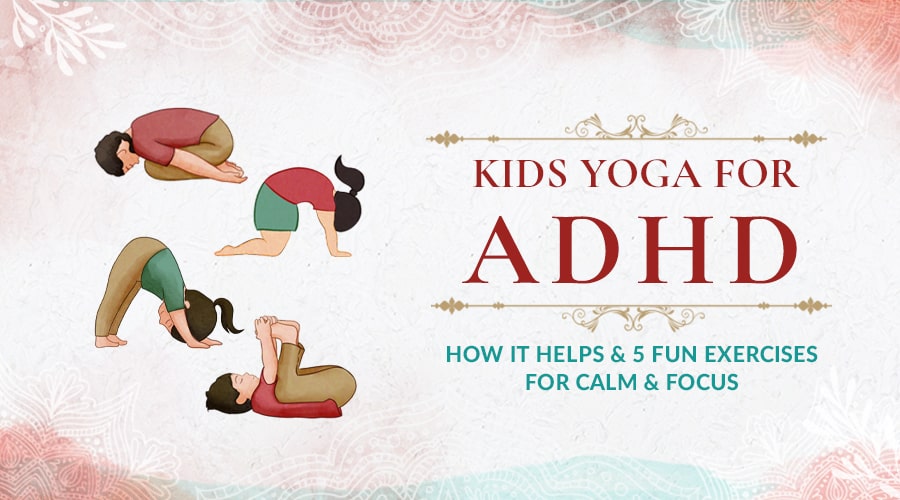Millions of kids across the world battle with Attention Deficit Hyperactivity Disorder (ADHD). The condition can make it difficult for them to focus, control their emotions, and participate in activities that call for sustained attention. While counseling and medication are frequently advised, not every child or family benefits from them. Fortunately, there’s one natural therapy that’s helping kids with ADHD find peace, connection, and focus all while having loads of fun - Kids Yoga.
Yoga is gaining popularity as an effective tool to help children regain balance and control in their daily lives. It's also a fun and interactive way for little ones to develop a deeper connection with minds and bodies, boosting concentration and self-awareness. Whether you're a devoted parent, a caring teacher, or a dedicated caregiver, this blog will dig into the benefits of Kids Yoga for ADHD and provide a calming yoga sequence that can help your child relax, focus, and rediscover peace.
What Is ADHD and How Does It Affect the Mind?
ADHD is one of the most common neurobehavioral disorders in children and can follow directly into adulthood. Research reveals children with ADHD have differences in certain areas of their brain, which can cause difficulties with attention, impulse control, and hyperactivity.
These brain regions, namely the prefrontal cortex, basal ganglia, and cerebellum, are all crucial for managing attention, decision-making, and controlling impulses. Children with ADHD may also have lower levels of the chemical's dopamine and norepinephrine, which help to manage attention and behavior in the brain.
The differences can make it challenging for children to focus, regulate their emotions, and engage in activities that require sustained attention. Some other symptoms of ADHD in kids include:
- Incessant daydreaming
- Forgetfulness
- Inability to sit still and concentrate
- Making careless mistakes
- Unable to resist temptation
- Difficulty in sharing and taking turns
How to Naturally Help Children with ADHD Relax
As parents and teachers, we always want to look into every option to help our kids manage their symptoms. The good news is that there are several natural remedies that can complement conventional therapies and medications. Let's look at some of the most effective alternative treatments for children with ADHD:
Movement & Play
Research shows that regular exercise and play can be hugely beneficial for ADHD kids, boosting positive changes in the brain and reducing impulsivity. A daily dose of outdoor play, movement, or any kind of healthy fun can also increase self-confidence and improve communication and social skills in children.
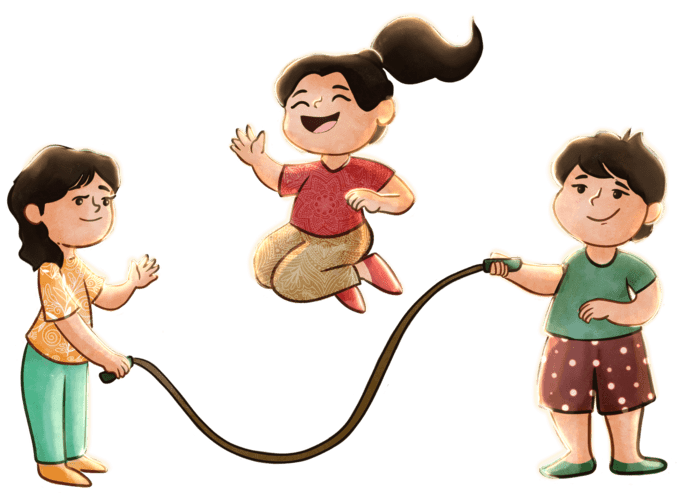
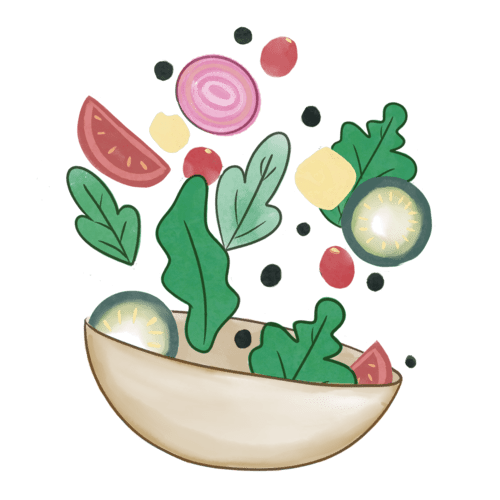
Healthy Diet
A balanced and nutritional diet free from processed fats and sugars is key to managing the symptoms of ADHD. It’s recommended that children increase their omega-3 fatty acid intake and eat more healthy, organic food.
By changing diet and eating habits, many of the symptoms of ADHD improve, and if yoga and meditation are included in the program, the improvements are deep and lasting.
Kids Yoga & Meditation
Asanas, meditation, and pranayama for ADHD are effective for emotional balance and focus. Regular practice has been shown to offer lasting relief and increased alertness in children and adults. Parents can enroll their children in ADHD yoga therapy, or even complete a teen and kids yoga teacher training course and gain essential tools to ensure kids receive the full benefit of yoga.
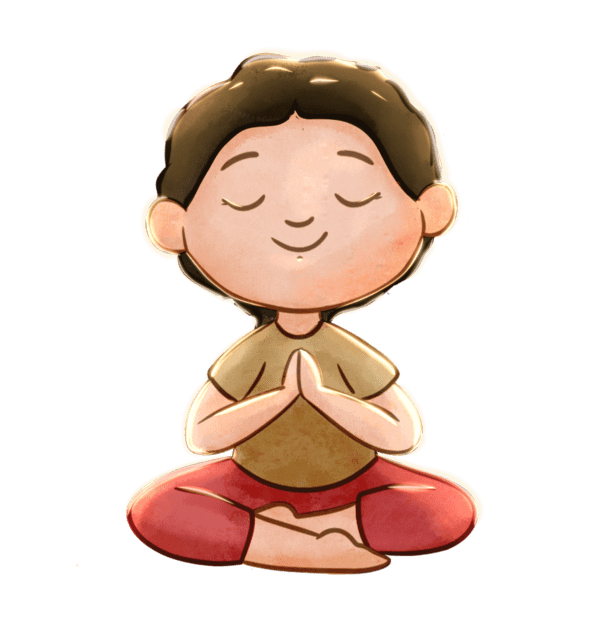
Is Yoga Good for Kids with ADHD? Benefits of Yoga for ADHD
Yoga has an abundance of benefits for teenagers and kids, especially those struggling to manage ADHD symptoms. Not only does it help children find calm and focus, but it also encourages physical activity, mindfulness, and relaxation. By incorporating yoga into a child's routine, you can help them better manage their condition while having a ton of fun. Here are several other benefits of yoga for ADHD children.
Balances the Nervous System
Yoga is renowned for its numerous psychological benefits and calming effects on the nervous system. Deep breathing exercises, gentle asanas, and meditation stimulates the vagus nerve, which activates the parasympathetic "rest and digest" response and slows down production of stress hormones like cortisol.
This balancing effect on the nervous system can improve a child’s neuroendocrine status and mood, helping students feel more relaxed, grounded, and focused.
Improves Attention and Focus
A study on the effects of Kids Yoga on ADHD children found an improvement in attention and reaction time. Students practiced yoga activities that encouraged concentration and relaxation twice a week and were able to sustain their attention for longer, while also increasing breath and body awareness. Controlled breathing exercises in yoga also allows for an overall feeling of calm.
Bolsters Emotional Well-Being
Children with ADHD often struggle to connect with their bodies and minds, and yoga helps strengthen that connection. The main goal of many practices is to calm the mind and deepen awareness. Through conscious movement, mindfulness, and relaxation exercises, Kids Yoga can improve self-esteem, reduce depression, and help children develop better relationships with those around them.
Promotes Calm & Relaxation
Another important benefit of yoga for ADHD is its soothing qualities. Kids Yoga teaches pranayama breathing exercises and relaxation exercises that help students cope more effectively with difficult situations. These movements also increase mind-body awareness, helping them better control their emotions.
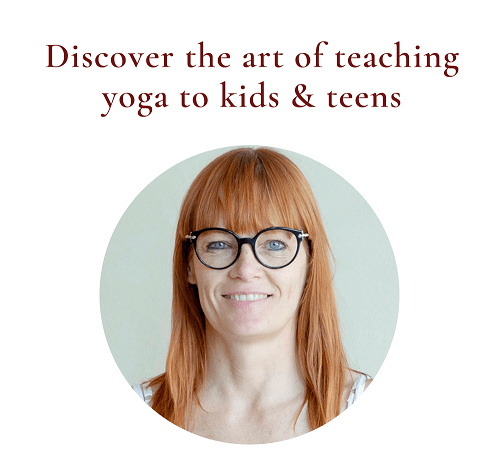
Discover the art of teaching yoga to kids & teens
Get free access to the exclusive podcast with master teacher Marzia Bendotti
What Is the Best Yoga for ADHD Children?
Children with ADHD often struggle with impulse control and inhibition, so yoga practices that focus on developing these skills are the best. Some fun yoga exercises that develop observation and awareness include forward-bending asanas, balancing and breathing games, and activities that progress from movement to stillness.
Dynamic muscle relaxation games can also be helpful, as they encourage children to relax and reduce hyperactivity. More importantly, choose activities and yoga poses that are fun and engaging for children. Using fairy tales to teach kids yoga poses is also a great way to boost engagement and improve focus.
Calming Kids Yoga Sequence for ADHD
Relaxation is a very important aspect of yoga for ADHD children. Through this moment of calm and peace, children can completely release tension in the body and mind. But in order to relax, you first need to focus, which can be a struggle for children and adults with ADHD.
As an experienced Kids Yoga instructor, I have studied numerous techniques to engage and stimulate young minds. Yoga poses accompanied by moments of peace and relaxation help ADHD children become more aware of their breath and body, while cultivating confidence on and off the mat. Here are the best yoga poses for ADHD to foster focus, calm, and control.
Lazy Cat Exercise
The lazy cat is a fun relaxation exercise that loosens and releases muscle tension. It's ideal at the start of a Kids Yoga class as children are typically exhausted and stressed out from school and other activities.
- Start by promoting your kids to lie on their stomachs on the mat.
- Now ask them to slowly get up onto all fours and to imagine that they are a lazy cat who has just woken up from a long nap.
- Ask them to give a big yawn, and even a meow!
- Now it’s time to slowly stretch the arms, legs, and back like a cat.
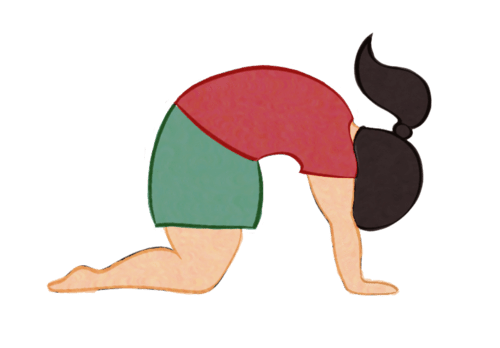
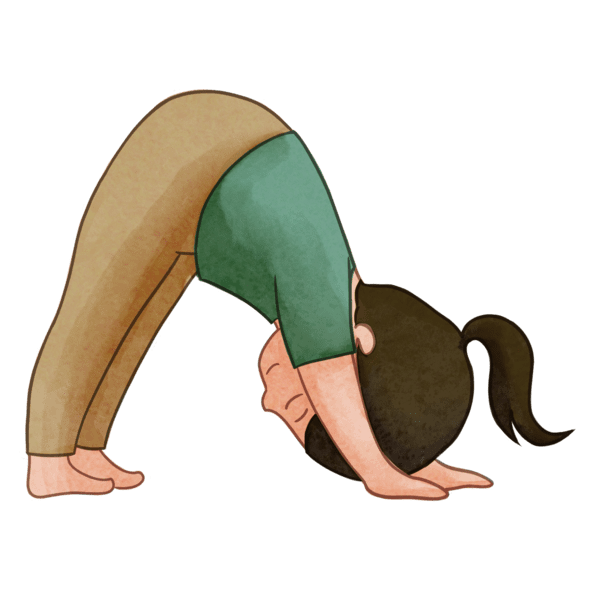
Downward-Facing Dog Pose
Downward-Facing Dog is one of the best-known yoga poses for children, resembling the iconic stretch our dogs do after a good nap! This kids yoga pose helps children release tension in the body by stretching their shoulders, spine, and hamstrings. It also promotes strength and flexibility and improves digestion.
- Prompt your students to get on all fours, just like a dog!
- Then, tell them to press their feet and hands into the floor and lift their hips up to the sky by straightening the legs and arms.
- Ensure that their backs and arms are straight, and the legs are extended. The neck should also be relaxed.
- Once here, ask who can lift one leg in the air like a tail. With legs raised, encourage your students to wag their tail, stick their tongue like a dog, or even bark for fun.
- With both feet on the mat, you can ask them to bring their legs together in Chihuahua or move their hands and feet apart to become a Dachshund - get creative!
Child’s Pose
Child's Pose is among the most relaxing yoga poses for kids. The gentle asana calms the mind, stretches the back, and opens the hips.
- We start sitting on our knees, feet resting on the floor and bottom on the heels.
- Ask your students to lean forward and rest their torso on their thighs.
- Here, they can pretend their arms are snakes slithering to the top of the mat.
- Once they have reached their maximum, bring them back to their breath and encourage them to relax fully into the pose.
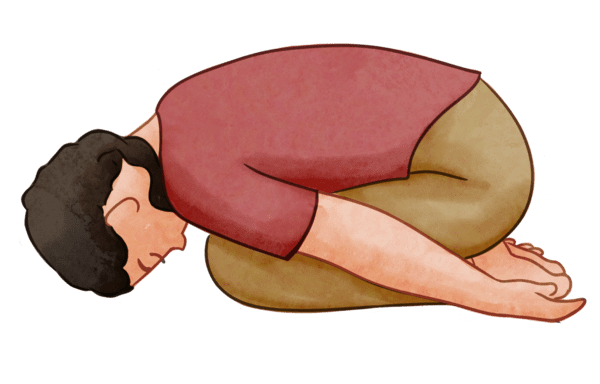
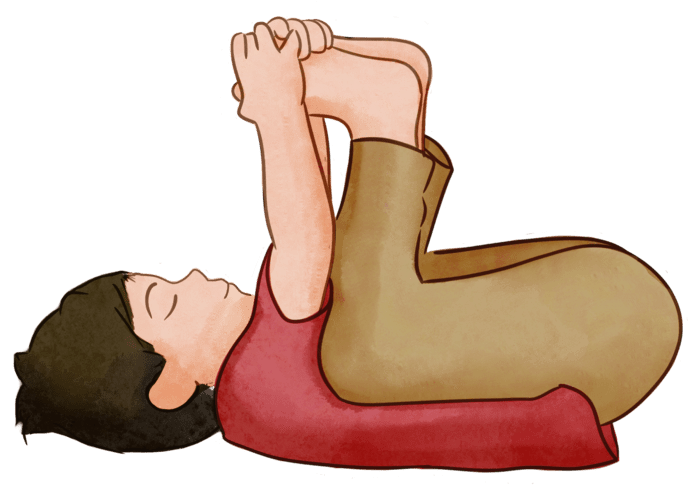
Happy Baby Pose
Happy Baby Pose is best practiced before final relaxation as it helps to ground your students and provide a nourishing release. This relaxing kids yoga pose for ADHD can also fight fatigue, calm the mind, and stretch the back and hips.
- Ask your students to lie on their backs with knees bent and feet touching the floor.
- Then, prompt them to bring their knees to their chin and spread the legs outward with knees pointing to the floor.
- Grab the soles of your feet and bring them upwards by extending the arms.
- Lastly, rock side to side - just like a happy baby!
Final Relaxation
To completely relax children's muscles (even in a situation of anxiety or hyperactivity), you need to first stiffen and then slowly relax the body, one part at a time. My advice is to put a playful twist on the final relaxation pose, Shavasana. For example, tell a short story in your kids yoga class, just like that of the little spider. For children under six:
- Ask your students to like flat on their stomachs.
- Tell them to imagine lying down on a large lawn with very soft grass.
- Let's start with the toes.
- Tell them to imagine a little spider crawling up their feet, tickling them for a few seconds, and then disappearing.
- Then, ask them to tense the muscles of their feet and release after five seconds.
- Continue the same exercise with the legs, arms and shoulders, so that they tense and relax each part of the body.
- End with the muscles of the face. This can be done with a funny facial expression or a nice big smile.
- Get them to relax their face again, concluding the story.

Your kids will experience a relaxing comfort all over their bodies after doing this pose. Even with the older students, it works quite well. You might include a story or just ask them to imagine floating on a soft cloud or resting in their favorite place.
For more insights into managing food cravings that can also affect ADHD, consider reading our article on nutrition experts' tips to control food cravings.
Final Thought
There is no surefire solution to ADHD, but complementing treatment with a balanced yoga practice can help our kids cultivate focus, self-awareness, and inner peace. Kids Yoga for ADHD also provides a safe space for little ones to connect with their bodies and emotions, developing essential coping mechanisms that can be carried into adulthood. As parents, caregivers, or aspiring yoga teachers, it's our responsibility to encourage and support children in finding the tools they need to thrive.

Discover the art of teaching yoga to kids & teens
Get free access to the exclusive podcast with master teacher Marzia Bendotti

